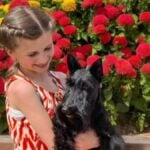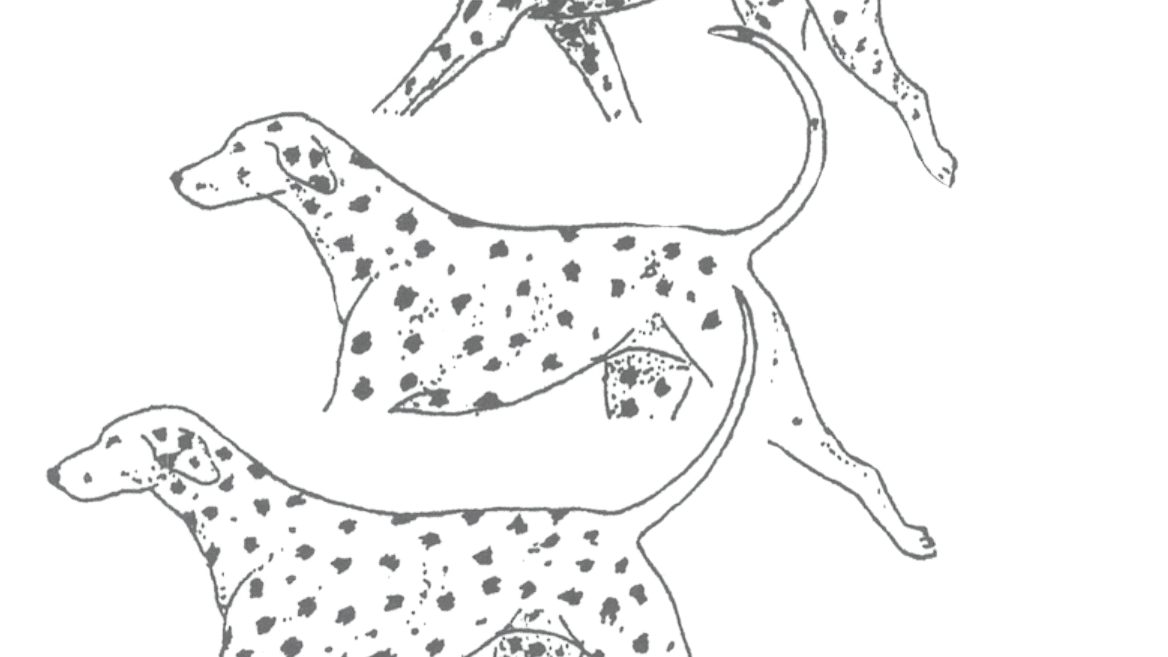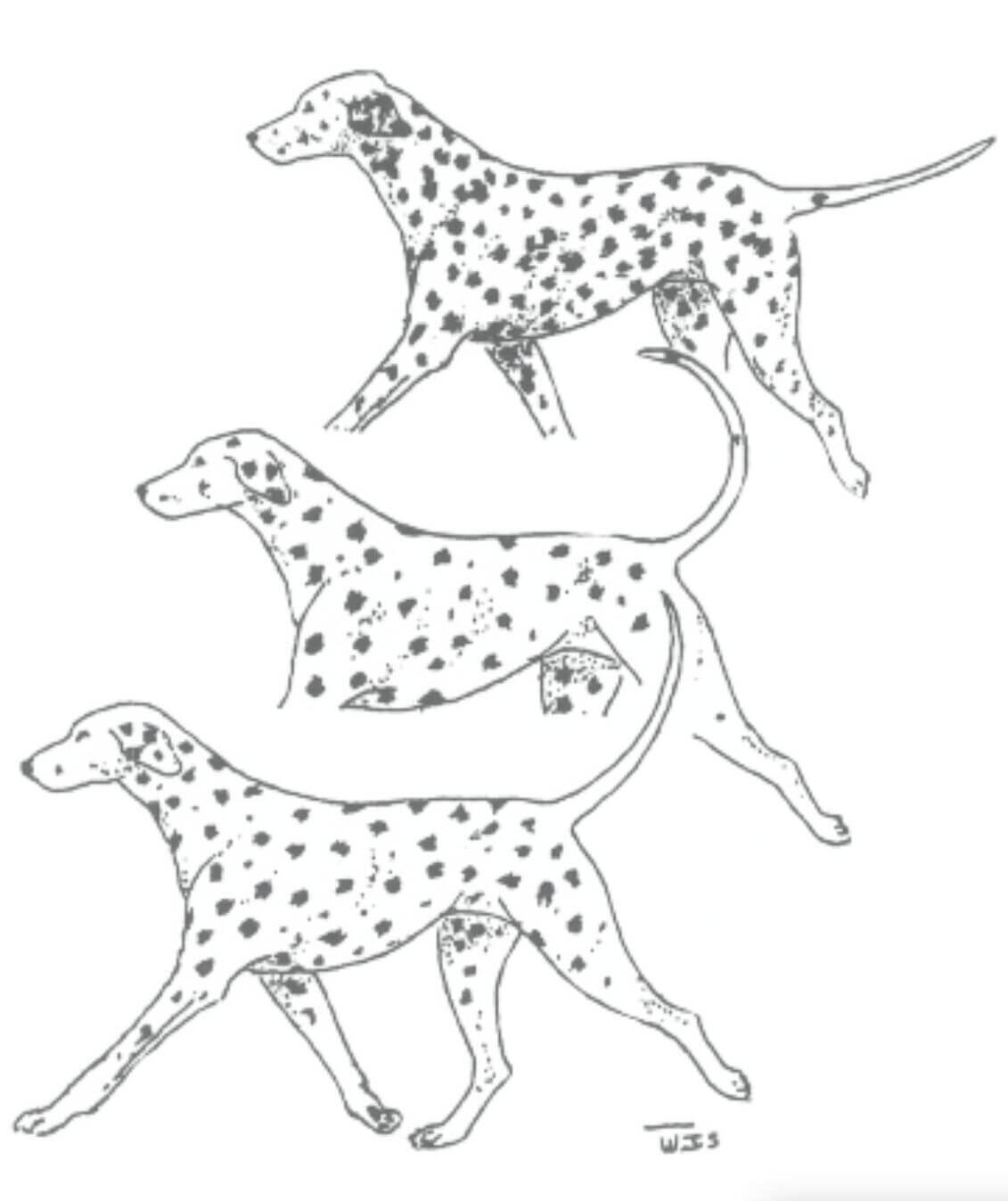
Home » Dalmatian: Correct Tail Position

This article was originally published in Showsight Magazine, September 2014 issue.
The perfect tail carriage of the Dalmatian is a natural extension of the topline, carried with a slight curve but never curled over the back as a “ring tail” (fault) or low-set tail (fault). Tail carriage can also be from the natural extension to 45° with a slight curve as it rises without curling over the back creating a “ring-tail.” These degrees of tail carriage are described as “high tail” carriage, not “ring tails.” These tails can have the correct tailsets but when in motion the tail starts to rise above the topline with a slight curve. These “high tail” carriages can be attitude, a happy dog with a good temperament. Males are prone to carry tails high when bitches are in season or when they become interested in different surroundings and objects. Agreed, the perfect tail carriage is desired, but these “high tail” carriages are not a fault, just undesirable.

They do not seem to be criticized as much as the “high-set” tails. Just as fault as “ring tails,” they can create the imperfect picture and can influence the rear quarter drive. The angle of the croup determines the tailset. Referring to the Scale of Points for the Dalmatian: The neck, topline, and body total 10 points. This section of the Standard describes the six parts: the neck, topline, chest, loin, croup, and tail. These parts are related, making the tail one-sixth of the 10 points. The tail should be judged accordingly. We all agree on the perfect tail carriage and the proper tailset. When these are faulty, they should be evaluated against the other good parts. Evaluate the whole dog.